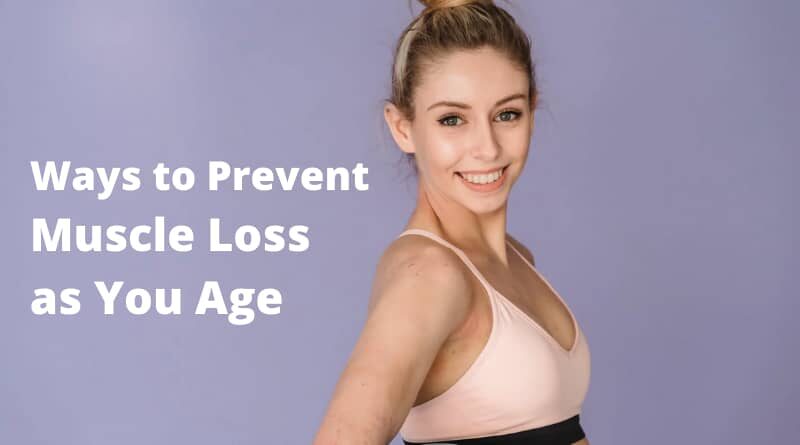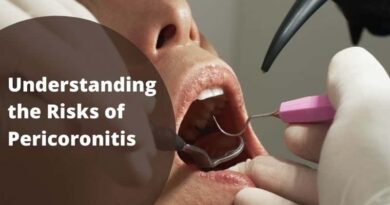8 Ways to Prevent Muscle Loss as You Age
Losing hair isn’t the only change you’ll encounter as you grow older. You’ll also begin to lose muscle mass. While age-related muscle loss may be natural, it has implications that go way beyond cosmetic appearances. Muscles help lift objects, protect your spine, and cushion your bones if you fall, which is why it’s so important to prevent as much muscle loss as possible as you age. From starting pelvic floor exercises (yes, those are important!) to eating a healthy diet, read on to discover eight ways to help prevent muscle mass loss before it happens.
Table of Contents
Ways to Prevent Muscle Loss as You Age
Know why muscle loss happens.
Age-related muscle loss has a name — sarcopenia — and it’s an inevitable part of aging. It usually starts to set in around age 50, though the onset time is very dependent on lifestyle and health factors. By age 75, almost every adult will experience sarcopenia. Sarcopenia can be caused by various factors working in concert, including a reduction in nerve cells responsible for triggering muscle movement, lower concentrations of certain hormones, and a decreased ability to turn protein into energy. However, just because sarcopenia will happen doesn’t mean that there isn’t anything you can do about it. Lifestyle changes like the ones outlined below can make a huge difference when it comes to when sarcopenia begins and how quickly it progresses.
Read: Steps to Ensure Women’s Health
Start early, if you can.
The best cure for sarcopenia is prevention (this is true of many age-related conditions, in fact). If you’re proactive and thinking about anti-aging in your 30s, 40s, and 50s, following the tips outlined below will give you a big head start and help delay the onset of sarcopenia. But if you’re reading this because you’ve already noticed some muscle loss as you age, don’t fret. The tips on this list will still make a difference. It’s never too late to start taking steps to improve your health and physical well-being.
Lead an active lifestyle.
Being active in general will keep your body resilient and help it weather age-related changes. Try to incorporate gentle physical activity into your day instead of sitting around on the couch all the time. For example, you can go for a walk around the neighborhood when you need a break from work instead of zoning out to a TV episode. Seek out physical activities that you also enjoy so that you’ll be incentivized to do them. Also, try to incorporate socialization as well so you’ll have friends to hold you accountable. Focus on what makes you excited, not what everyone else is doing. There’s no point in taking up golf (a popular pastime among older adults) if you hate it.
Read: Signs Your Dental Health Needs Attention
Eat a healthy, protein-rich diet.
As you age, your body becomes less efficient at turning the protein(1) you eat into energy and muscle mass, which means you need to eat more protein to get the same effects. Lean meats and plant-based proteins can help you get the protein you need without packing on the calories. Eating an overall healthy and balanced diet will also promote general physical health, making it easier to stay active, lift weights, and do other things that help stave off muscle loss. If you are worried about age-related weight gain, reducing your calorie intake and eating healthier foods can also help prevent that.
Try strength training.
When it comes to working out, lifting weights and other strength training is the best thing you can do to prevent muscle loss. If you are new to strength training, consider hiring a personal trainer for a few sessions to show you the correct form and help you set some goals for yourself. It’s easy to injure yourself if you don’t use the proper condition or grab weights that are too heavy, so start small and slowly increase the intensity. Doing total body strength training two to three days a week is an excellent goal to set for yourself and build your muscles while still giving them time to recover in between workouts.
Read: Healthy Eating and Exercise
Work your cardiovascular system.
Your visible body muscles aren’t the only ones you need to think about. Your heart is also a muscle, and it breaks down as you age. To keep your heart and lungs strong, you should also incorporate cardiovascular training two to three days a week – on days when you don’t do strength training. Examples of aerobic exercise include running, swimming, and cycling — anything that gets your heart rate up for an extended period. Your doctor can help you figure out your target rate and how long you should be exercising based on your age and health conditions.
Improve balance and flexibility.
All that strength training causes your muscles to contract and potentially become stiff, which is why it’s essential to lengthen them back out with other exercises, such as yoga and Pilates. These exercises can also help improve your balance and flexibility, two more things that can often be affected by aging. Not only that but improving your credit will also help reduce your fall risks, which is very important for older adults who are more prone to accidents and have more difficulty healing up after a fall.
Don’t forget the muscles down there.
Many women find that their vaginal and pelvic muscles grow weaker as they age, and this can be accelerated by life events, such as childbirth and menopause. To counteract this muscle weakness, incorporate pelvic floor exercises into your workout routine. You can add Kegel balls to up the intensity if regular Kegels aren’t enough. Your doctor may also prescribe Kegel ball exercises to help with certain kinds of incontinence and other health issues that can be brought on by aging.
Muscle loss is a part of aging, but that doesn’t mean you should just let it happen. Follow these eight tips to prevent muscle loss and keep your body strong as you age.
Recommended Articles:




